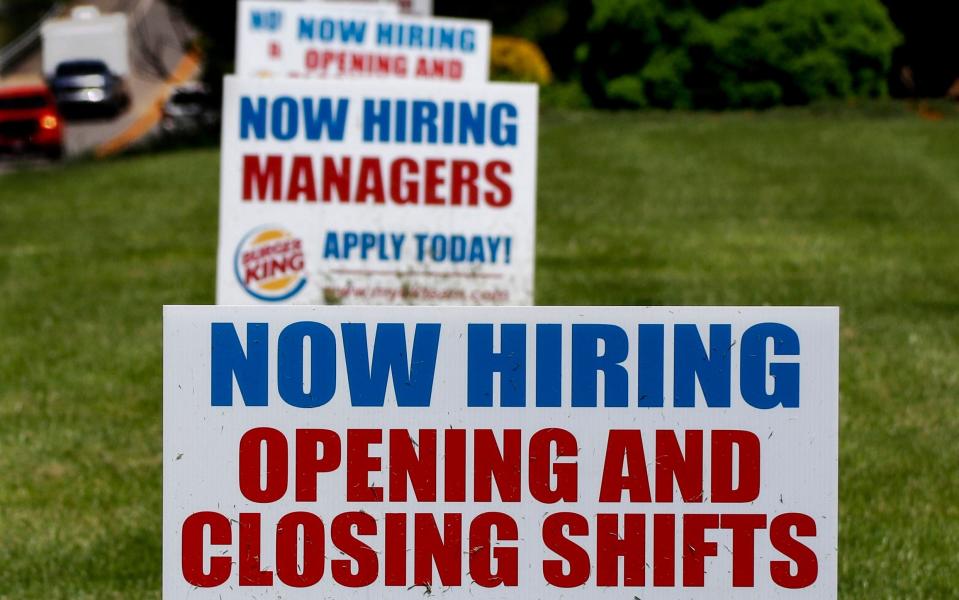The great US jobs disaster: no silver lining after 40m apply for benefits

The surge in US joblessness notched up another staggering record yesterday. The number of Americans to have claimed new unemployment benefits passed 40m since the Covid-19 crisis struck.
One other number provides American workers a glimmer of hope, however. Close to 80pc of US workers that lost their job in April believe they have only been temporarily laid off, one survey found.
If they are correct and the ties between employers and workers have not been completely severed, the American jobs market could bounce back quicker than many are expecting.
The first hints of recovery can already be seen in the unemployment benefits data. While another 2.1 million workers filed new claims for jobless benefits, the number of those continuing to ask for support unexpectedly dropped back.
Continuing jobless claims slipped by 3.9m to 21.1m, the first fall since coronavirus started to wreak havoc in mid-March. The surprising drop suggests the re-opening of states could already be causing a rebound in hiring.
Economists have warned US workers are not out of the woods yet, however. Pantheon Macro economist Ian Shepherdson says the jobs market had seen “the first wavelet of rehiring” but believes the pace of the recovery has been overstated. The drop could largely be driven by a statistical quirk relating to how certain large states force workers to make continuing claims.
"As other states reopen, especially California and the populous Northeast, continuing claims ought to trend downwards," Shepherdson says.
Even as states reopen, two big stumbling blocks remain for the US jobs rebound.
First, social distancing measures are likely to depress demand. The US economy will not immediately recover its lost output, meaning jobs are unlikely to return as quickly as they were lost.
Second, the White House’s decision to boost unemployment benefits rather than install a Europe-style furlough scheme to save jobs has proven costly. It could also hold back the rebound in hiring.
Weekly unemployment benefits have been lifted to $600 per week with the more generous welfare due to end on July 31. The benefits are often more than many of the lower paid workers laid off would normally receive in wages.
That creates an incentive for many workers not to return to jobs even if they are available.
Jan Hatzius, Goldman Sachs economist, also raises doubts about how many of those that are “temporarily” laid off will in fact return to jobs. He warns “not all of them will be rehired quickly” but says this could prove an advantage if the post-coronavirus economy is radically different to the pre-virus economy.
A large-scale job reallocation would therefore be smoother than in countries such as Britain, where governments have tried to save existing jobs.
Nonetheless, economists expect the coronavirus shock to still be rippling through the jobs market for years to come. Forecasters expect next Friday’s monthly labour market report to confirm that unemployment hit 20pc in May, the highest level since the Great Depression.
Goldman expects US unemployment to hit a peak of 25pc by the end of the second quarter before returning to 8pc by late 2021, more than double the pre-virus level.
James Knightley at ING warns US workers are facing a “long road to recovery”.
“Hiring is happening, but it will be constrained by social distancing restrictions while the government’s own support efforts could hinder the pace of recovery.”
This week may prove to be an inflection point for the American labour market but 40 million jobs will not be found overnight.

